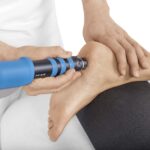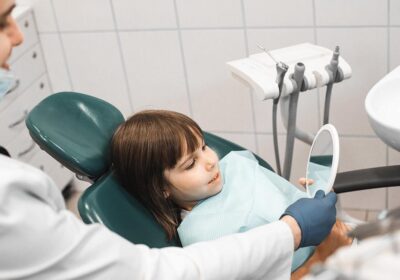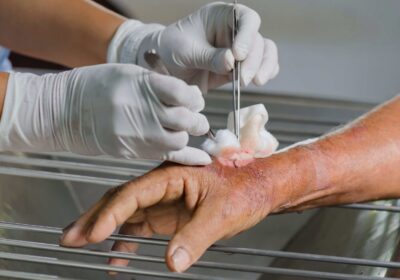
Pain Management and Spinal Disc Replacement: What Patients Should Know
Spinal disc replacement surgery can offer a path to restored mobility and relief from chronic pain, but it also comes with its recovery challenges, especially regarding post-surgery discomfort. Dr. Larry Davidson, an experienced spinal specialist, highlights that understanding pain management options and preparing for the recovery process can help create a more comfortable transition back to daily life.
Understanding Pain in the Post-Surgery Phase
Post-surgical pain is a natural part of the body’s healing response, resulting from tissue manipulation, muscle strain and inflammation. In spinal disc replacement surgery, the body needs time to adjust to the new disc, and patients may experience soreness and discomfort in the back and nearby muscles. While the intensity and duration of pain vary by individual, many patients begin noticing gradual improvements within a few weeks and may experience increasing relief over time as healing progresses.
Pain Relief Options After Spinal Disc Replacement
Modern pain management offers several options, which can often be tailored to a patient’s specific needs. Working closely with the healthcare team is crucial to selecting the best approach, ensuring effective pain relief while minimizing side effects. Below are some of the most common methods:
Prescription Medications
Post-surgery, doctors may prescribe short-term medications like opioids or muscle relaxants to manage severe pain. While often effective, these medications are generally used only in the initial recovery period due to potential side effects and risk of dependency. Non-opioid medications such as NSAIDs (e.g., ibuprofen) are often recommended as the next step to reduce inflammation and discomfort.
Over-the-Counter Pain Relievers
After the initial phase of recovery, many patients transition to over-the-counter medications, such as acetaminophen, to manage lingering discomfort. These are generally gentler on the body and can be taken as needed, providing a convenient option for at-home pain relief.
Physical Therapy
Physical therapy can play an important role in managing pain after spinal disc replacement. Guided exercises improve strength, flexibility and circulation, which helps alleviate muscle tension and speeds up the healing process. A licensed physical therapist tailors the program to address specific areas of discomfort, gradually enhancing the spine’s mobility and reducing pain over time.
Nerve Blocks and Injections
In some cases, patients may benefit from nerve blocks or corticosteroid injections to manage pain around the surgical site. These targeted treatments can provide relief for patients experiencing persistent pain that does not respond well to oral medications, especially if inflammation or nerve irritation is involved.
Alternative Therapies
Non-traditional therapies, such as acupuncture, massage therapy and chiropractic care, are increasingly used as complementary pain relief methods. Acupuncture, for example, stimulates specific points in the body to release natural pain-relieving chemicals, while massage therapy reduces muscle tension and improves blood flow. These therapies, often combined with traditional treatments, provide additional avenues for comfort and pain management.
Practical Tips for Post-Surgery Comfort
Pain management isn’t limited to medications and therapies; lifestyle adjustments and simple, day-to-day practices may also contribute positively to recovery comfort. Here are a few practical tips for maximizing comfort after spinal disc replacement:
Create a Restful Recovery Environment
Setting up a dedicated, comfortable space to rest is essential. A supportive mattress, extra cushions and accessible items like water and snacks can help reduce strain on the body, potentially making the recovery period more comfortable. Small adjustments like placing a chair for seating while dressing or ensuring frequently used items are within easy reach can reduce unnecessary movements that strain the back.
Prioritize Gentle Movement
Although rest is crucial, staying too sedentary can lead to stiffness and increased discomfort. Gentle, low-impact activities, like short walks or gentle stretching, promote blood flow, reduce muscle tension and support the healing process. Gradually increase movement according to your doctor’s guidance, listening to your body to avoid overexertion.
Maintain Proper Posture
Good posture significantly reduces pressure on the spine, helping to alleviate post-surgical discomfort. Sitting and standing with the back straight and shoulders aligned distributes body weight evenly, minimizing strain. It may be helpful to use lumbar support when sitting for prolonged periods or consider ergonomic chairs designed to support proper alignment.
Ice and Heat Therapy
Alternating between ice and heat packs can help manage localized pain and inflammation around the surgical site. Ice packs reduce swelling and numb sore areas, making them ideal in the early days of recovery. Heat packs, used later in the recovery process, relax tight muscles and improve blood circulation, helping ease lingering tension.
Stay Hydrated and Follow a Balanced Diet
Hydration and nutrition play a significant role in recovery. Staying hydrated keeps joints lubricated, which is essential for reducing inflammation and supporting joint health. A diet rich in vitamins, minerals and protein speeds up tissue repair, reducing pain and promoting a faster recovery. Foods like leafy greens, lean meats, nuts and whole grains are excellent choices.
Practice Breathing Exercises and Mindfulness
Managing pain isn’t just physical; mental resilience plays a role in recovery. Breathing exercises and mindfulness techniques can help reduce stress and anxiety, providing a natural way to alleviate pain. Simple practices like deep breathing, meditation or guided relaxation help shift focus away from discomfort and support overall mental well-being.
Setting Realistic Recovery Goals
Understanding that recovery is a gradual process can help set realistic expectations and reduce frustration. Every patient heals at their own pace, and while some may experience relief sooner, others may take a bit longer to regain full comfort and mobility. Regularly consulting with healthcare providers about recovery milestones and sticking to a personalized pain management plan from pain care clinic can provide structure and motivation, allowing for small yet meaningful progress.
When to Seek Help
While some pain is expected, certain signs may indicate complications and require professional evaluation. If you experience intense, worsening pain, signs of infection (e.g., fever, redness or swelling) or any unusual symptoms, it’s essential to contact your healthcare provider. Promptly addressing these issues can help prevent setbacks and support a safe, steady recovery. If pain persists or becomes difficult to control, searching for a pain management doctor near me can help patients connect with specialists who offer tailored strategies for long-term relief and improved recovery outcomes.
Pain management and comfort are critical aspects of the spinal disc replacement recovery process. By understanding the available pain relief options and incorporating supportive lifestyle practices, patients may find ways to enhance comfort during recovery. Dr. Larry Davidson mentions, “New minimally invasive spinal surgical techniques have certainly changed the way that we are able to perform various types of spinal fusions. All of these innovations are aimed at allowing for an improved patient outcome and overall experience.” With guidance from a healthcare team and a proactive approach to pain management, the journey toward restored mobility and improved quality of life becomes far more manageable.


















